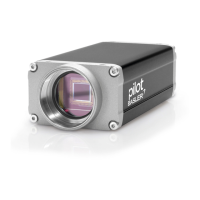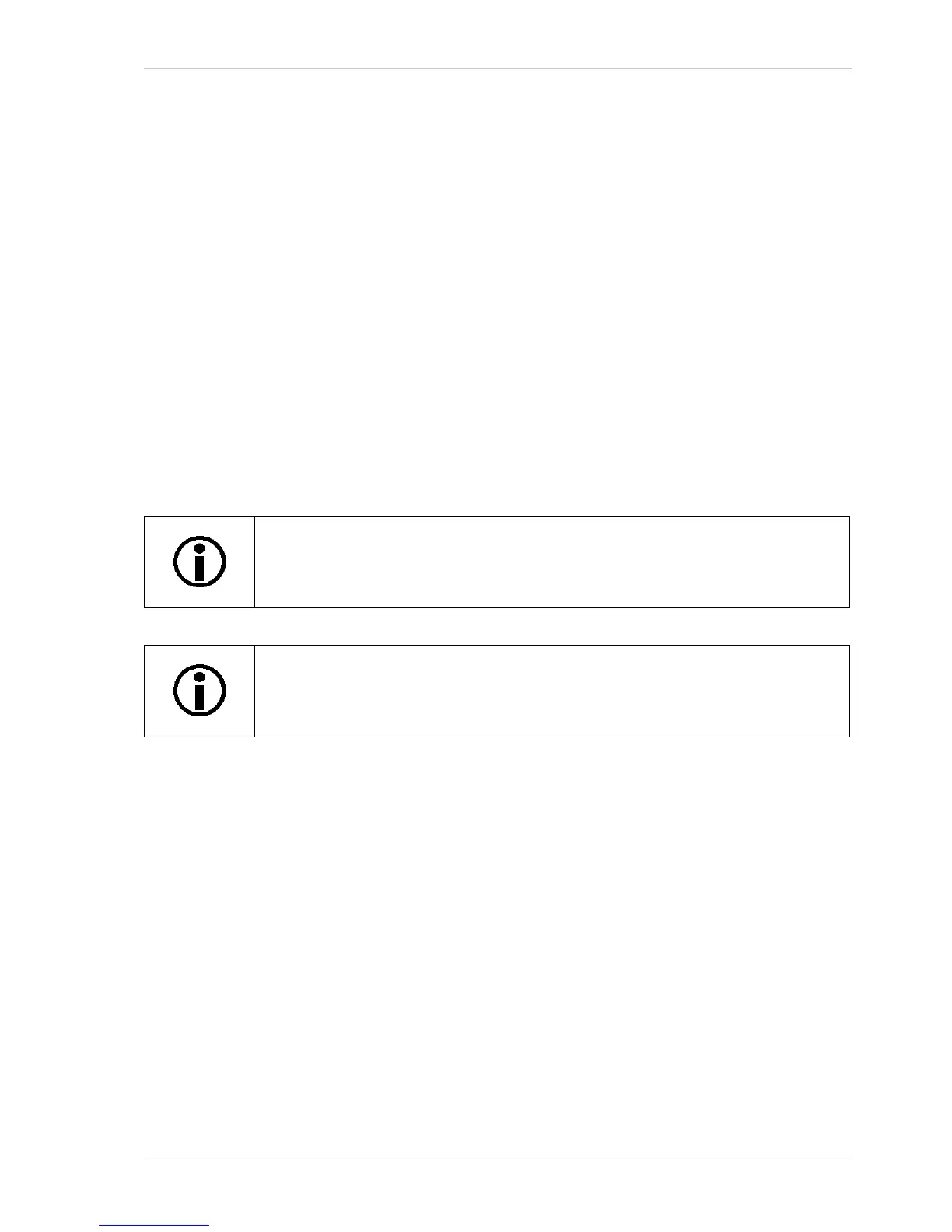Features
Basler pilot 183
Relative Positioning of an Auto Function AOI
The size and position of an Auto Function AOI can be, but need not be, identical to the size and
position of the Image AOI. Note that the overlap between Auto Function AOI and Image AOI
determines whether and to what extent the auto function will control the related image property.
Only the pixel data from the areas of overlap will be used by the auto function to control the image
property of the entire image.
Different degrees of overlap are illustrated in Figure 52. The hatched areas in the figure indicate
areas of overlap.
If the Auto Function AOI is completely included in the Image AOI (see (a) in Figure 52), the
pixel data from the Auto Function AOI will be used to control the image property.
If the Image AOI is completely included in the Auto Function AOI (see (b) in Figure 52), only
the pixel data from the Image AOI will be used to control the image property.
If the Image AOI only partially overlaps the Auto Function AOI (see (c) in Figure 52), only the
pixel data from the area of partial overlap will be used to control the image property.
If the Auto Function AOI does not overlap the Image AOI (see (d) in Figure 52), the Auto
Function will not or only to a limited degree control the image property. For details, see the
sections below, describing the individual auto functions.
We strongly recommend completely including the Auto Function AOI in the Image
AOI, or, depending on your needs, choosing identical positions and sizes for Auto
Function AOI and Image AOI.
You can use auto functions when also using the reverse X feature. For information
about the behavior and roles of Auto Function AOI and Image AOI when also
using the reverse X feature, see the "Reverse X" section.

